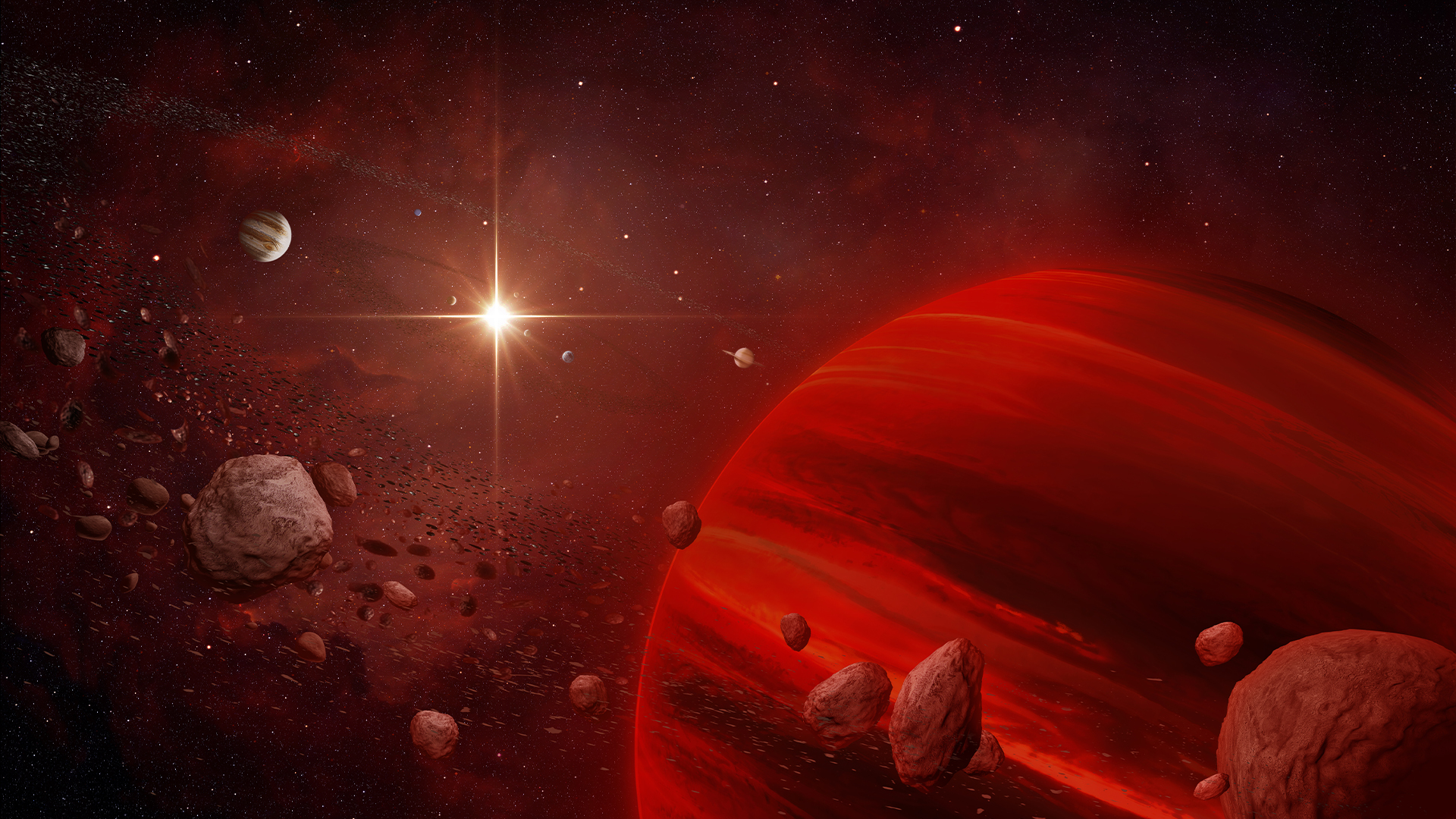
Stars twinkle in the night sky, even millions of light-years away, because they are incredibly hot. Planets are much cooler. In between, brown dwarfs are an astronomical enigma: More massive than planets but smaller than stars, they fit neatly into neither category.
Sometimes, astronomers call these objects "failed stars." But if you fail as a star, can you succeed as a planet? In other words, can a star or a brown dwarf become a planet? It's an intriguing idea, but for many astronomers, the answer is no. "Stars and planets, just based on the way that they form, are two different things," said Kovi Rose, a doctoral candidate of astronomy at the University of Sydney in Australia.
Stars — and likely brown dwarfs — form when clouds of gas clump together through gravity. Thanks to their large mass, Rose said, stars sustain nuclear fusion, turning hydrogen into heavier elements: first helium, then carbon, then iron. Brown dwarfs don't get massive enough to fuse ordinary hydrogen, but they can briefly fuse a heavier version of it known as deuterium, according to the International Astronomical Union.
Like planets, brown dwarfs cool as they age. Many stars, however, explode when they die, "spreading a bunch of other material around the universe," Rose said. New stars form from the leftover gas. As they do, heavier elements swirl around them in disks. "That leftover material will form rocky pebbles and planetesimals and then eventually planets," Rose said.
Related: Does every star have planets?
Stars and brown dwarfs form from gas, whereas planets form from heavier elements. By definition, then, a star can never turn into a planet.
Still, definitions evolve. For much of history, stars and planets were defined by their patterns of movement in the sky. Eventually, people learned that planets circled stars. Now, astronomers know that stars (and brown dwarfs) can also circle each other — and that some planets circle nothing.
Sign up for the Live Science daily newsletter now
Get the world’s most fascinating discoveries delivered straight to your inbox.
Brown dwarfs, which were only hypothesized in the 1960s and observed in the 1990s, complicate traditional definitions further. They are, "neither failed stars nor souped up planets but kind of their own thing," said Evgenya Shkolnik, a professor of astrophysics at Arizona State University.
Rose agreed. But even a third category doesn't quite capture the nuances of these celestial objects. "The better we get at understanding things, the more we understand that things exist on a spectrum," Rose said.
Often, stars, brown dwarfs, and planets are defined by size: Stars are at least 80 times the size of Jupiter (the approximate mass required for hydrogen fusion), Rose said, while brown dwarfs are 12 to 80 times the size of Jupiter (the approximate mass required for deuterium fusion).
But many celestial bodies complicate these categories. Some planets, like the gas-giant Jupiter, can get big enough to gravitationally accrete gas on top of their rocky cores, and some of these gassy planets are big enough to fuse deuterium. Brown dwarfs, meanwhile, lose the ability to fuse deuterium over time. On the other end of the spectrum, Rose recently identified the coolest brown dwarf known to emit radio waves, a property more often associated with stars.
Because of these overlaps, many astronomers prefer to define these objects based on their origins, not on their masses.
As long as these celestial bodies are defined by how they were formed, brown dwarfs will never become planets — but stay tuned.
"I think you could in some ways draw a comparison to the debate over Pluto's status as a planet," Rose said. Pluto was "demoted" to a "dwarf planet" in 2006 because the International Astronomical Union changed its definitions; in the future, some brown dwarfs could be likewise reclassified as planets.
And while one star will never become one planet, it could become part of many, for the same reason people say "we are all made of stardust." When a star explodes, "that star will eventually be recycled into the next generation of planets and everything else," Shkolnik said. "I think it's lovely."
Meg Duff is a freelance science journalist and audio producer based in Brooklyn. She holds an M.F.A from New York University's Arthur L. Carter Journalism Institute. Her stories have also appeared in Slate Magazine, Scientific American, MIT Technology Review, and elsewhere.












